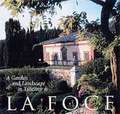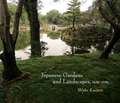Spaces in Translation – Japanese Gardens and the West: Penn Studies in Landscape Architecture
Autor Christian Tagsolden Limba Engleză Hardback – 25 sep 2017
The first Japanese gardens in the West appeared at the world's fairs in Vienna in 1873 and Philadelphia in 1876 and others soon appeared in museums, garden expositions, the estates of the wealthy, and public parks. By the end of the nineteenth century, the Japanese garden, described as mystical and attuned to nature, had usurped the popularity of the Chinese garden, so prevalent in the eighteenth century. While Japan sponsored the creation of some gardens in a series of acts of cultural diplomacy, the Japanese style was interpreted and promulgated by Europeans and Americans as well. But the fashion for Japanese gardens would decline in inverse relation to the rise of Japanese militarism in the 1930s, their rehabilitation coming in the years following World War II, with the rise of the Zen meditation garden style that has come to dominate the Japanese garden in the West.
Tagsold has visited over eighty gardens in ten countries with an eye to questioning how these places signify Japan in non-Japanese geographical and cultural contexts. He ponders their history, the reasons for their popularity, and their connections to geopolitical events, explores their shifting aesthetic, and analyzes those elements which convince visitors that these gardens are authentic. He concludes that a constant process of cultural translation between Japanese and Western experts and commentators marked these spaces as expressions of otherness, creating an idea of the Orient and its distinction from the West.
Din seria Penn Studies in Landscape Architecture
-
 Preț: 441.67 lei
Preț: 441.67 lei -
 Preț: 200.27 lei
Preț: 200.27 lei -
 Preț: 247.43 lei
Preț: 247.43 lei -
 Preț: 258.91 lei
Preț: 258.91 lei -
 Preț: 257.83 lei
Preț: 257.83 lei -
 Preț: 269.15 lei
Preț: 269.15 lei -
 Preț: 475.71 lei
Preț: 475.71 lei - 19%
 Preț: 390.46 lei
Preț: 390.46 lei -
 Preț: 234.78 lei
Preț: 234.78 lei -
 Preț: 233.25 lei
Preț: 233.25 lei - 23%
 Preț: 580.44 lei
Preț: 580.44 lei -
 Preț: 281.10 lei
Preț: 281.10 lei -
 Preț: 190.77 lei
Preț: 190.77 lei - 19%
 Preț: 444.99 lei
Preț: 444.99 lei -
 Preț: 230.69 lei
Preț: 230.69 lei - 11%
 Preț: 454.73 lei
Preț: 454.73 lei -
 Preț: 329.10 lei
Preț: 329.10 lei - 11%
 Preț: 542.77 lei
Preț: 542.77 lei - 11%
 Preț: 444.79 lei
Preț: 444.79 lei - 11%
 Preț: 446.16 lei
Preț: 446.16 lei -
 Preț: 463.23 lei
Preț: 463.23 lei - 11%
 Preț: 559.53 lei
Preț: 559.53 lei -
 Preț: 433.78 lei
Preț: 433.78 lei - 11%
 Preț: 523.39 lei
Preț: 523.39 lei - 11%
 Preț: 444.47 lei
Preț: 444.47 lei - 11%
 Preț: 503.73 lei
Preț: 503.73 lei - 11%
 Preț: 444.47 lei
Preț: 444.47 lei - 11%
 Preț: 563.40 lei
Preț: 563.40 lei - 11%
 Preț: 475.22 lei
Preț: 475.22 lei - 11%
 Preț: 497.50 lei
Preț: 497.50 lei - 23%
 Preț: 437.96 lei
Preț: 437.96 lei
Preț: 467.05 lei
Nou
Puncte Express: 701
Preț estimativ în valută:
89.37€ • 93.31$ • 73.96£
89.37€ • 93.31$ • 73.96£
Carte tipărită la comandă
Livrare economică 04-18 aprilie
Preluare comenzi: 021 569.72.76
Specificații
ISBN-13: 9780812246742
ISBN-10: 0812246748
Pagini: 256
Ilustrații: 47 illus.
Dimensiuni: 186 x 237 x 23 mm
Greutate: 0.54 kg
Editura: MT – University of Pennsylvania Press
Seria Penn Studies in Landscape Architecture
ISBN-10: 0812246748
Pagini: 256
Ilustrații: 47 illus.
Dimensiuni: 186 x 237 x 23 mm
Greutate: 0.54 kg
Editura: MT – University of Pennsylvania Press
Seria Penn Studies in Landscape Architecture
Notă biografică
Cuprins
Introduction
Chapter 1. From China to Japan: The History of Asian Spaces
Chapter 2. Discourses of Spaces
Chapter 3. Spreading the Japanese Garden Worldwide
Chapter 4. Between Essence and Invention
Chapter 5. Zen and the Art of Gardens
Chapter 6. Elements of the Japanese Garden
Chapter 7. Authoritarian Gardens
Chapter 8. Connecting Spaces, Disconnecting Spaces
Chapter 9. Postmodernizing Japanese Gardens
Conclusion
Notes
Bibliography
Index
Acknowledgments
Chapter 1. From China to Japan: The History of Asian Spaces
Chapter 2. Discourses of Spaces
Chapter 3. Spreading the Japanese Garden Worldwide
Chapter 4. Between Essence and Invention
Chapter 5. Zen and the Art of Gardens
Chapter 6. Elements of the Japanese Garden
Chapter 7. Authoritarian Gardens
Chapter 8. Connecting Spaces, Disconnecting Spaces
Chapter 9. Postmodernizing Japanese Gardens
Conclusion
Notes
Bibliography
Index
Acknowledgments
Descriere
In Spaces in Translation, Christian Tagsold explores Japanese gardens in the West and ponders their history, the reasons for their popularity, and their connections to geopolitical events. He concludes that a process of cultural translation between Japanese and Western experts created an idea of the Orient and its distinction from the West.







